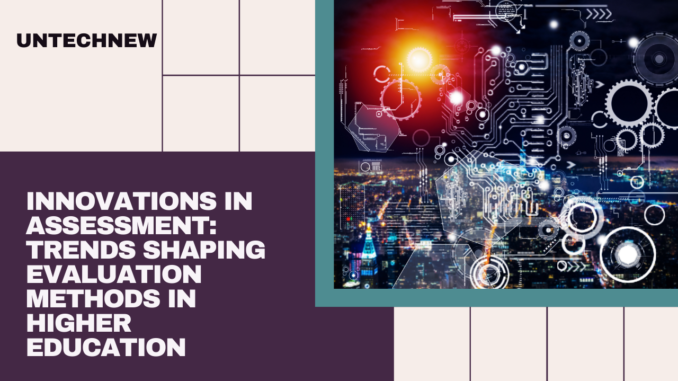
In the landscape of higher education, assessment methods are continually evolving to meet the diverse needs of students and the demands of a rapidly changing world. Traditional forms of assessment, such as standardized tests and written exams, are giving way to innovative approaches that focus on measuring not just knowledge retention, but also critical thinking, problem-solving skills, and real-world application. In this article, we delve into the latest trends shaping assessment methods in higher education and explore how these innovations are reshaping the learning experience for students and educators alike.
1. Shift Towards Authentic Assessment
Authentic assessment is gaining traction as educators recognize the importance of evaluating students’ abilities to apply knowledge and skills in real-world contexts. Unlike traditional exams that rely heavily on memorization, authentic assessment tasks mirror the complexities of professional settings, challenging students to demonstrate their understanding through practical applications, projects, and simulations. This approach not only enhances student engagement but also provides a more accurate measure of their readiness for the workforce.
2. Embracing Technology-Enabled Assessment Tools
Advancements in technology have revolutionized assessment methods in higher education. Online platforms, digital portfolios, and computer-based simulations offer flexible and interactive ways to assess student learning. Adaptive learning systems use algorithms to personalize assessment experiences, adjusting the level of difficulty based on individual progress and performance. Moreover, the integration of artificial intelligence (AI) and machine learning algorithms allows for automated grading and personalized feedback, freeing up educators’ time for more meaningful interactions with students.
3. Formative Assessment for Continuous Improvement
Formative assessment, which focuses on providing feedback and support during the learning process, is gaining prominence as a means to promote student growth and learning outcomes. Through formative assessment techniques such as peer feedback, self-assessment, and real-time quizzes, educators can identify areas of strength and weakness early on, allowing students to adjust their learning strategies accordingly. This ongoing feedback loop fosters a culture of continuous improvement and empowers students to take ownership of their learning journey.
4. Competency-Based Assessment Models
Competency-based education (CBE) is reshaping the way students are assessed in higher education. Unlike traditional grading systems based on seat time and credit hours, CBE focuses on mastery of specific competencies or skills. Students progress at their own pace, advancing upon demonstration of proficiency rather than completing a predetermined curriculum timeline. This shift towards competency-based assessment allows for greater flexibility and customization, catering to diverse learning styles and prior knowledge levels.
5. Assessment for Equity and Inclusion
Inclusive assessment practices are essential for ensuring equitable learning opportunities for all students. Educators are increasingly exploring alternative assessment methods that accommodate diverse learning needs and experiences. Universal design for learning (UDL) principles advocate for the creation of assessments that are accessible to students with varying abilities and backgrounds. Additionally, culturally responsive assessment approaches recognize and value the diversity of students’ identities, experiences, and perspectives, promoting a more inclusive learning environment.
6. Collaborative and Project-Based Assessment
Collaborative assessment strategies emphasize teamwork, communication, and problem-solving skills, mirroring the collaborative nature of many professional settings. Project-based assessment tasks, group presentations, and case studies encourage students to work together to tackle real-world challenges, fostering collaboration and collective learning. These collaborative assessment methods not only assess individual contributions but also promote the development of essential workplace skills such as teamwork and communication.
Conclusion
Innovations in assessment methods are reshaping the landscape of higher education, offering new opportunities to enhance learning outcomes, promote student engagement, and foster a culture of continuous improvement. From authentic assessment tasks that mirror real-world contexts to technology-enabled platforms that personalize learning experiences, educators are embracing diverse approaches to assess student learning and skills development. By staying abreast of these trends and integrating innovative assessment methods into their teaching practices, educators can better prepare students for success in an ever-evolving global economy. As we continue to navigate the complexities of higher education, the adoption of innovative assessment practices will play a crucial role in shaping the future of learning and teaching.

Leave a Reply